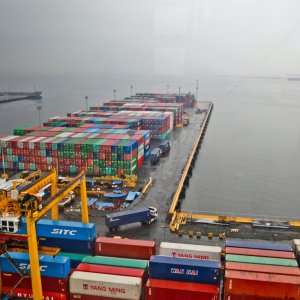Public-Private Alliances Could Fix Health Infrastructure

STORY INLINE POST
Q: What are the main constrains when building hospitals and clinics in Mexico?
A: One major constraint is funding. Hospitals have limited access to the financial sector, since they are seen as a risky investment due to the large amount of cash payments they receive. Mexicans do not have a culture of insurance, partly because it remains too expensive. Hospitals have to generate bills without names, leading to poor financial management that reduces a business’ credibility. The financial sector does work with several large hospital groups and very small clinics but it is more reserved with medium-sized institutions that have between 20 and 60 beds. Small clinics generally need a much smaller amount of money for construction projects – between MX$3 million (US$150,000) and MX$5 million (US$260,000). For a medium-sized group this is not enough because these groups require loans of between MX$50 million (US$2.6 million) and MX$80 million (US$4.1 million).
Q: What strategies has Grupo MDF implemented to increase efficiency in construction and reduce costs?
A: We are focusing on making our whole operating strategy more efficient to reduce construction costs. With software, for example, we traditionally designed our models using AutoCAD, which allows drawing in 2D and modeling in 3D. Now, we are training our people to use a process called Building Information Modeling (BIM). This software allows you to design, build, define construction materials and resolve all problems that arise after the design phase, all the way to the maintenance of the building. We expect to launch our first project using BIM in 2019. We hope it will make our operations more efficient by increasing the accuracy of our inventory. We can now see exactly how much we need of a certain product and order the precise amount. Additionally, we can determine the exact specifications of the material, allowing us to improve the construction process and to drive down the cost for the client by up to 20-25 percent.
Q: What role does infrastructure play in improving healthcare access?
A: Most small clinics in rural areas do not have the right facilities to receive patients. Many are simply former houses that have been converted into clinics and often, they are not interested in modernizing.
The private sector and the government should work together to gradually upgrade these small clinics. We can start with surgery facilities and then move on to diagnostics and overall hospital services. These projects can take five to six years but would increase productivity greatly. In April 2019, the Ministry of Health released a list of hospitals considered white elephants. In Oaxaca, 52 hospitals were built at a budget of MX$200 million (US$10.2 million) for each and they are no longer in operation. Once the government completes the construction project, it hands the hospital over to the ministry, which does not have the budget to run it nor to offer competitive salaries. Hospitals are normally built due to election promises but they are not part of an effective long-term health strategy based on industrywide coordination.
Q: Which countries could serve as an example for Mexico to improve its healthcare system?
A: Chile has implemented telemedicine as a way to provide health services in remote areas. The five health clusters in that country also offer training to recently graduated doctors, sending them to clinics in remote areas, which offers them significant field experience. In exchange, doctors can come back after three years and study the specialty of their choice fully paid by the government.
Chile has also established an agreement called 25-25-25 that forces every new administration to propose 25 new hospital projects of different sizes, start the construction of those projects and complete any outstanding projects regarding the 25 hospitals proposed by the previous government. This initiative offers continuity, which allows parties from both the public and private spheres to understand where the sector is going and how they can better tune their strategies.
























